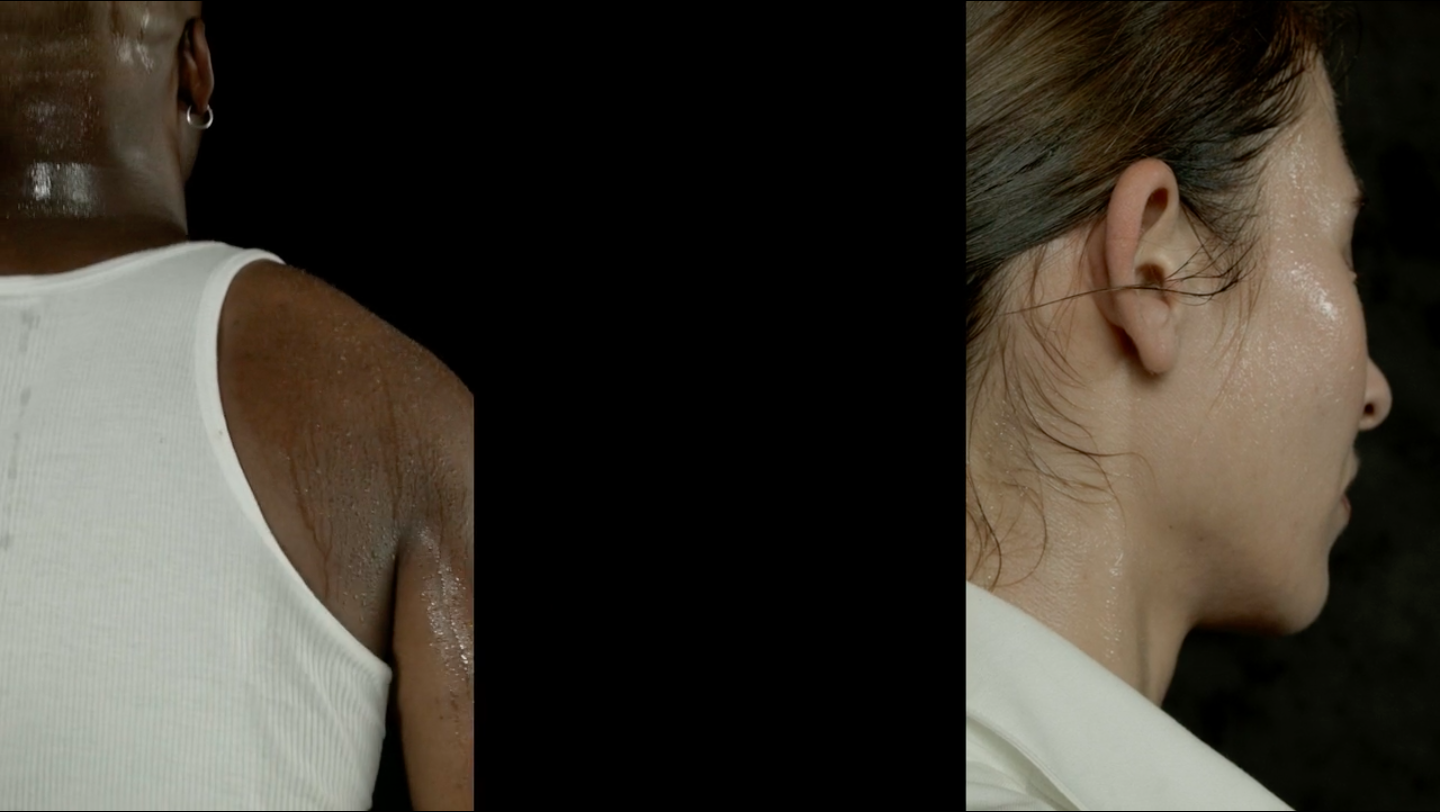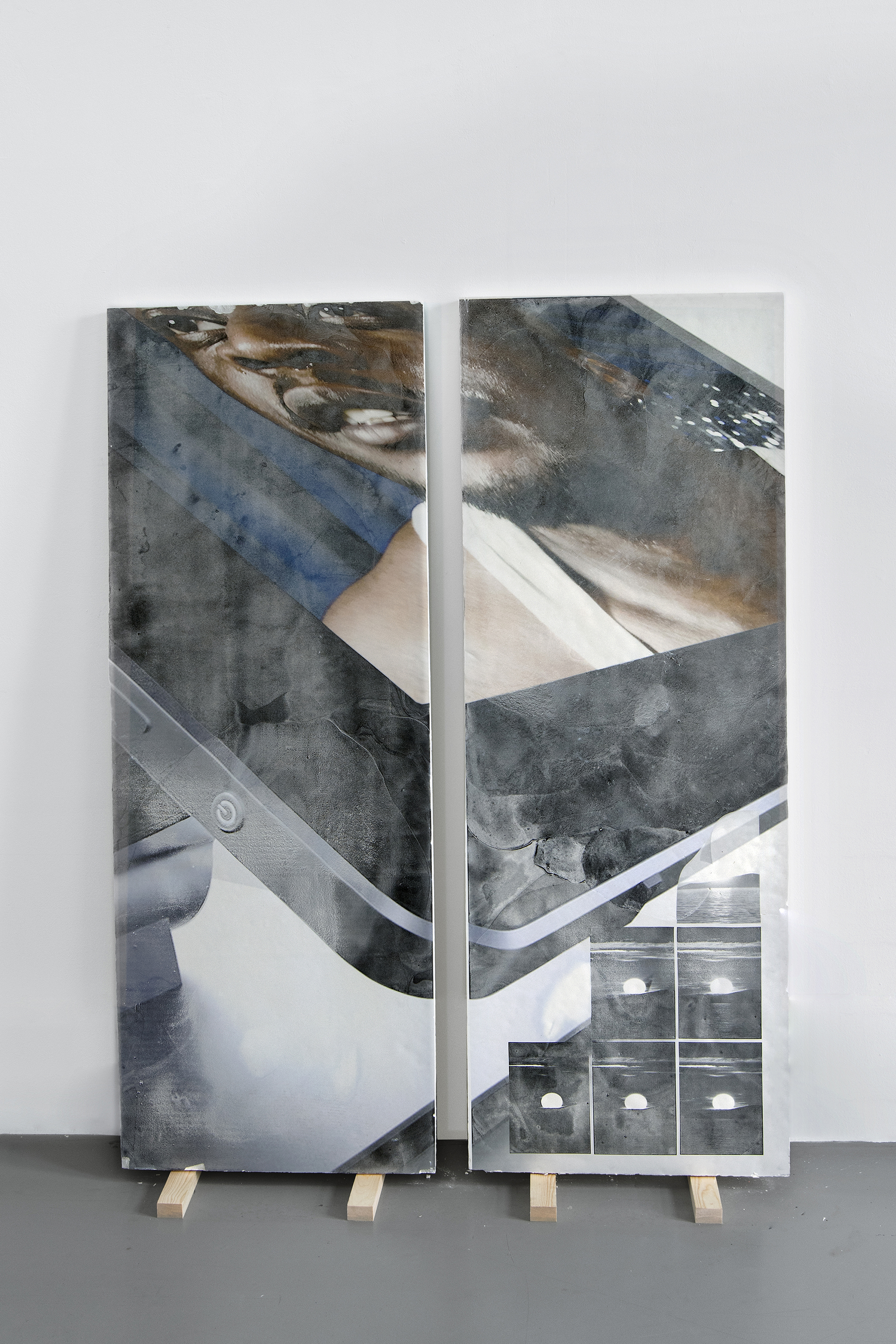Happiness Chemistry, 2019
Graduation show
![]()
Happiness Chemistry, 2019
3 channel video-installation, 7 minutes with sound
![]()
![]()
![]()
![]()
Bus, 2019
Inkjet photographic prints on baryta paper
40x60 cm
![]()
Roleplay, 2019
Inkjet photographic prints on baryta paper
70x100 cm
![]()
Bubble medicine (2019)
Inkjet transfer on plaster, wood
110x150 cm
![]()
Saw you on screen (2019)
Inkjet transfer on plaster, wood
110x150 cm
Happiness Chemistry, 2019
The sun sets over the Atlantic. Somewhere, a couple are immortalising the moment. Carefully encapsulated in their phones, the glowing sky and gold-tinted ocean bear witness to their exceptional moment. And as it joins the stream of thousands of others on the web, this sunset photograph, though born of a desire for individuality, becomes almost a social fact.
In Flora Aussant’s video installation Happiness Chemistry, the backdrop is a setting sun, a nod to Penelope Umbrico’s Sunset Portraits from Flickr. Two characters walk, guided by a voice with soft, relaxing intonations, typical of personal development.
Dream, achievement: all of that can become true.
Now...breath, relax, be focus on yourself
You can go so much further than you think.
The couple are moving faster and faster. What’s more, they’re not a couple, they’re in competition. There’s no stopping their frantic race towards happiness and success. The first drops of perspiration are beading and accumulating on their faces, which are taut with effort.
This perspiration and the fluidity emanating from their bodies take us back to the work of Zygmunt Bauman, and his metaphor of a liquid society. Liquid, like time slipping through our fingers, or in the image of social experience and human bonds, which lose all permanence when autonomy and individual responsibility are sacralised.
With Happiness Chemistry, Flora Aussant examines the notion of performance applied to the intimate, and questions the omnipresent injunction to happiness in our societies. Like the Sunset Portraits, the diktat of self-fulfilment is set within a conformist and alienating framework that goes beyond individual behaviour.
The race for performance is no longer confined to the world of work, but also extends to our private sphere. By highlighting this decompartmentalisation of work and leisure, the artist is questioning the capitalist and neo-liberal tendencies that underpin the ideology of well-being.
A quasi-pharmaceutical aesthetic. The visual style of Happiness Chemistry plays with the codes of fashion photography and advertising. In this way, Flora Aussant offers us a reflection on her own practice, in which images function as communicating vessels, absorbed and spat out by the various industries.
In contrast to this frenetic pace, the photographic part of Happiness Chemistry attempts to mark a pause. Symbols or caricatures, the characters depicted are those who suffer under society 24/7.
Some of the images from the video installation have been transferred to plaster, a porous and changeable material, destined to degrade over time, in contrast to the exponential growth curve. Others appear on tarpaulin, evoking an advertising world marked by a quasi-pharmaceutical aesthetic. The visual style of Happiness Chemistry plays with the codes of fashion photography and advertising. In this way, Flora Aussant offers us a reflection on her own practice, in which images function as communicating vessels, absorbed and spat out by different industries.
Soizic Pineau.







